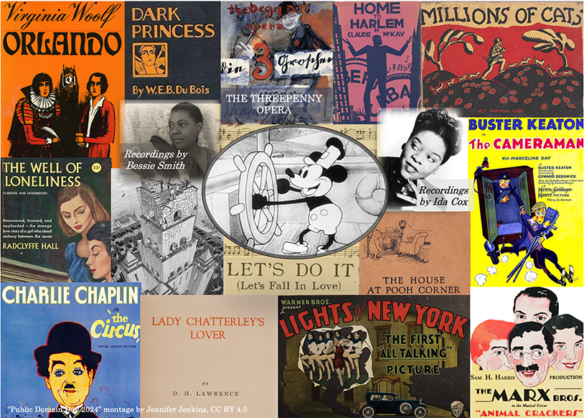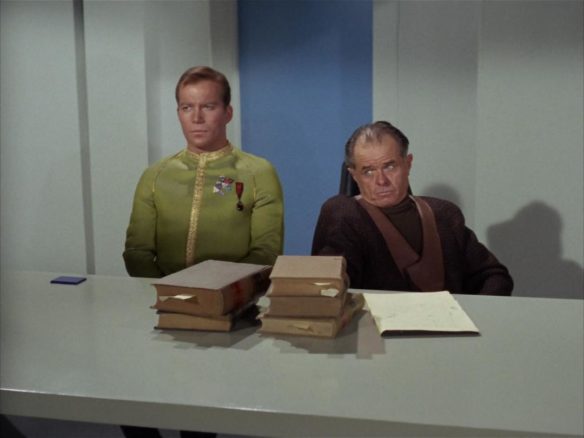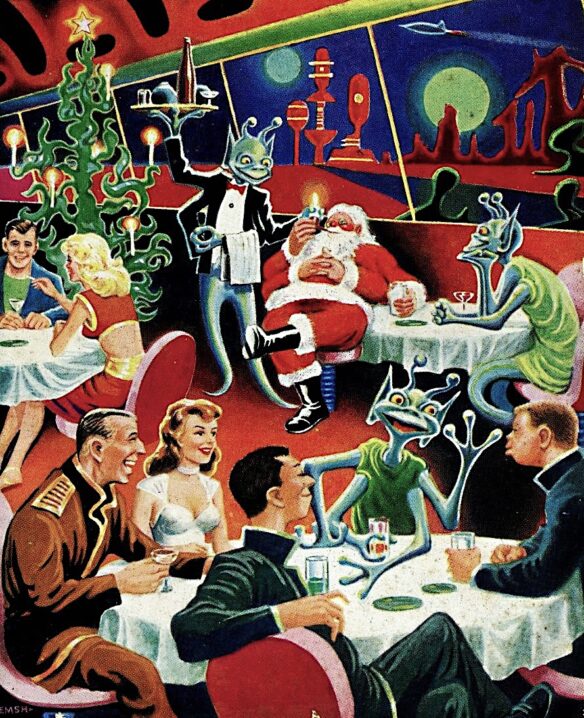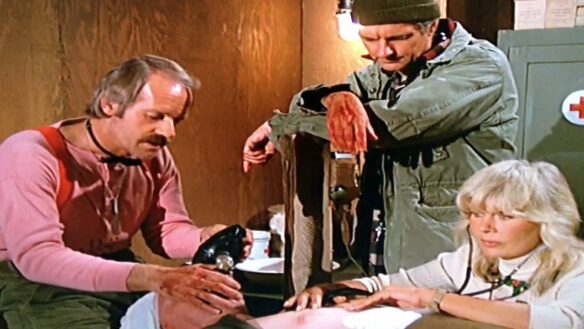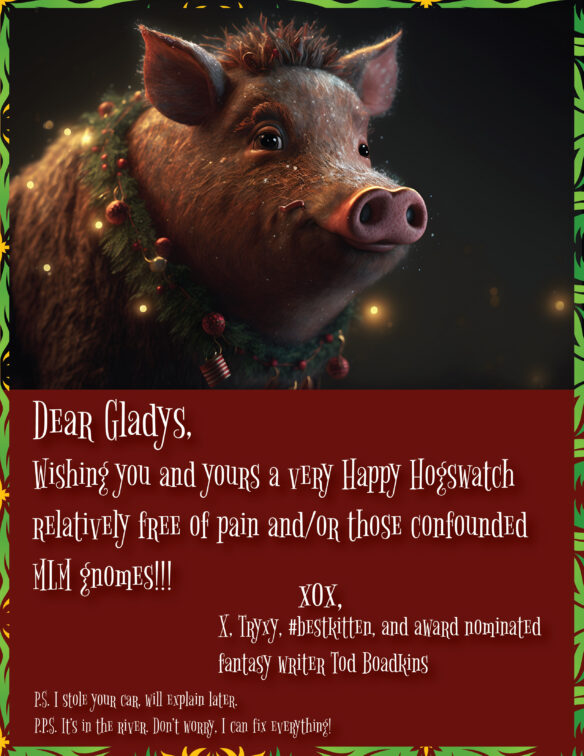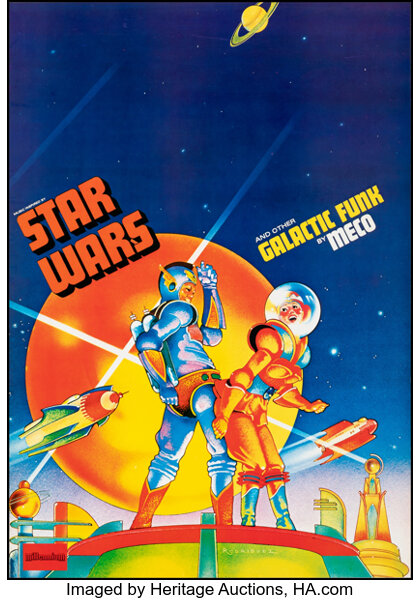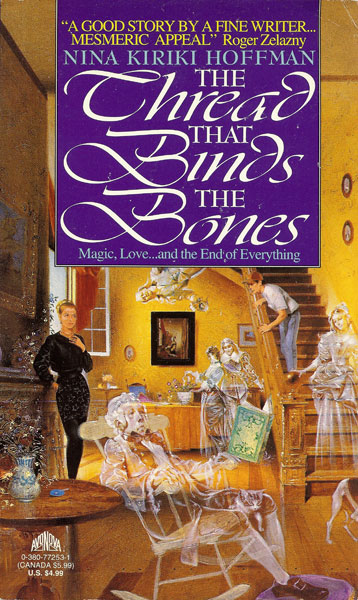(1) UNFORSEEN INTERSECTION. Maya St. Clair draws a fascinating comparison between a current bestseller and Heinlein’s controversial classic in “Fourth Wing Review: Starship Troopers (for Girls!)”
…Criticisms of Starship Troopers’ themes, while hyperbolic, were not entirely off-base. In Heinlein’s world, the ideal military life is violent, abusive, and deindividualizing; death is and should be omnipresent at every stage of training. For example, there’s the basic training exercise in which
“… they dumped me down raw naked in a primitive area of the Canadian Rockies and I had to make my way forty miles through mountains. I made it [by killing rabbits and smearing fat and dirt on his body] … The others made it, too… all except two boys who died trying. Then we all went back into the mountains and spent thirteen days finding them…. We buried them with full honors to the strains of ‘This Land Is Ours’… They weren’t the first to die in training; they weren’t the last.”
Through the eyes of Johnnie, we experience an intensity of life that makes civilian existence seem anemic, even pathetic….
…With all that being said, it feels wrong to mention Fourth Wing in the same breath as Starship Troopers. Putting aside the fact that Fourth Wing is a poorly-written work whose prose has been critiqued to death by many people before me, the two books seem to represent opposing moments in publishing history. Heinlein, for all his faults, was writing “up” for an audience of teens, treating them as adults and including them in the sphere of “adult” science fiction, with complex worldbuilding and (relatively) sophisticated themes. Sixty years later, Fourth Wing and its team (author Rebecca Yarros and Entangled Publishing) represent a publishing world moving in the opposite direction: creating books for adults in an actively juvenile style, and cultivating an audience of adult readers who no longer demand that published books have good writing at all so long as they check necessary boxes of sensation and eroticism.
But thematically and content-wise, the two books are as close as one could possibly get. Fourth Wing, like Starship Troopers, sells a military coming-of-age story in which mass death is a part of the allure (“brutally addictive,” says the cover blurb). Someone on Reddit puts the death count of Fourth Wing at 222 cadets, plus an untold number of civilians — though it’s widely considered a “fluff” read. Its primary audience (and the primary audience of most mainstream fantasy now) is female, young, progressive, and would probably be aghast at being compared to grimdark bros, Heinlein apologists, or men in general. And yet here we all are, hooked on the same stuff….
(2) ICONIC LE GUIN COVER ART OFFERED. The estates of Carol Carr and her husband Robert Lichtman are in the news: “Original cover art for Le Guin sci-fi novel goes on sale” at Bay Area Reporter.
…First published in paperback by Ace Books, the novel sported cover art by award-winning artists and biracial couple Leo and Diane Dillon. Their painting featured profiles of the book’s protagonists in the left bottom corner looking off into the distance. Surrounding the pair is a blue and white celestial-like scene with what appears to be a brown planet and a spaceship hovering above.
(Leo Dillon, of Trinidadian descent, died in 2012. He was the first African American to win the prestigious Randolph Caldecott Medal for illustrators of children’s books, while the Dillons were the only consecutive winners of the award, having received the honor in 1976 and 1977.)
The Dillons’ original 17 and 1/4 by 13 inches acrylic painting is now being offered for sale for the first time at the Antiquarian Booksellers’ Association of America global book fair taking place in San Francisco in early February. The asking price is $20,000.
“It is literally unique. This is it, the original and not a print,” said Mark Funke, a rare bookseller who lives in Mill Valley where his business is also located.
Scouting out shops in the East Bay several years ago looking for new material to sell, Funke had received a tip about the sale of various items from a home in the Oakland hills. It led him to receive an invite from the executor of the estate to come to the house.
To his amazement, Funke had stumbled onto the archives of three individuals involved in the world of science fiction writing. One was the late Terry Carr, an editor at Ace Books who published the works of Le Guin and other sci-fi authors and died in 1987. While most of Carr’s personal papers had gone to UC Riverside, Funke found several boxes still in the house and acquired them….
… Funke is now handling its sale on behalf of the Carr and Lichtman Estate. He will have it available on a first-come, first-served basis at his booth at the book fair.
“I am pricing it high for the artists but, I think, reasonable for it being Le Guin’s most famous novel. She won awards for it, and it ratcheted her up to the greats of science fiction,” said Funke. “It’s got very topical content; this idea of the planet Gethen and ambisexual individuals. I just think it is fascinating and a very active topic in today’s discussion.”
In a statement to the B.A.R. about the sale, the executor for the family estate said, “The Carr-Lichtman family has treasured this artwork for over 50 years and now it is time to find a new owner who will cherish this remarkable work of science fiction publishing history for the next 50 years.”…

(3) KORSHAK COLLECTION NEWS. The Korshak Collection announced on Facebook —
We have partnered with the University of Delaware for an academic illustrated catalog of the Korshak Collection. We don’t want to give away all of our surprises, but the catalog will include a foreword by New York Times bestselling author Neil Gaiman and entry by Pulitzer prize winner author Michael Dirda, as well as an interview with the Hugo Award winning artist Michael Whelan. We are so grateful for this partnership and all of the outstanding contributions that have made this project possible.
(4) MCU UK. James Bacon recommends David Thorpe’s account of his time as a creator for Marvel UK: “In Review: The Secret Origin of Earth 616 By David Thorpe” at Downthetubes.net.
… This is a fascinating book, and, for Captain Britain fans, a definite buy. For comic fans interested in Marvel UK, of great interest. Yet it is also an excellent autobiography, a very readable and personal exploration of a comic fans desires, aspirations and progression to be a writer and an insight into how Marvel UK was, and offers real honesty when it comes to a comics career that took an interesting turn that saw David Thorpe’s work in the industry elsewhere. The story is brimful, and includes how another comic related moment saw him turn to a very successful career beyond comics, one that arguably has made a real difference to the world….
… David Thorpe came up with the concept of Earth 616, and he describes it as a Stan Lee styled “Hoo Boy” moment when he heard Mysterio say “This is Earth dimension 616. I’m from Earth 833.” to Spider-Man in Spider-Man: Far From Home and that is something that any comic reader can appreciate, many of whom have imagined themselves as writers….
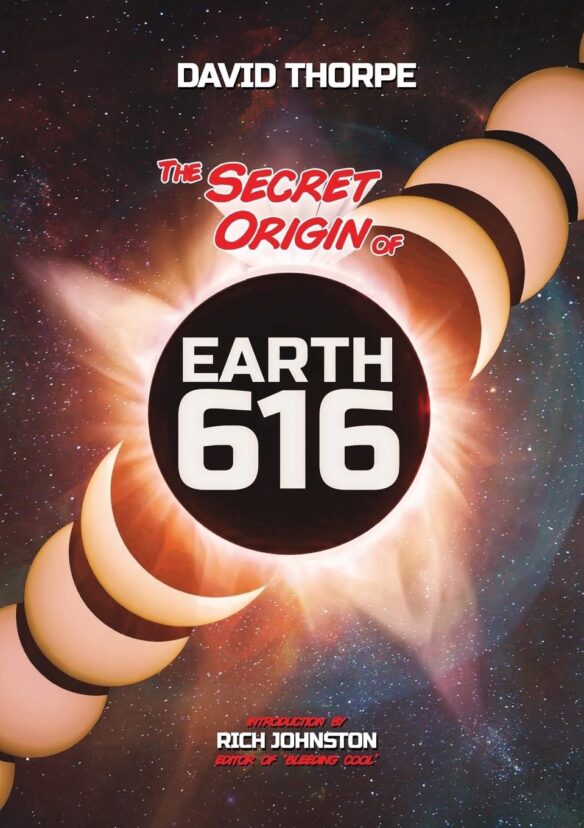
(5) IN FELLOWSHIP THERE IS STRENGTH. “Board Game Cafe Workers Went on a Quest for a Union and Won” reports the New York Times.
A golden glow illuminated the employees huddled inside a Hex & Co. cafe on the Upper East Side, a haven created for board game enthusiasts to gather for fantastical quests.
Meticulous campaigns were second nature to these workers — how many times had they infiltrated an obsidian castle or vanquished a warlock? They had been immersed in this particular adventure for months, navigating a labyrinth governed by strict rules and made harrowing by unfamiliar tasks and tests. Now they gathered to plot their final triumph: unionization.
On that Tuesday in September, Hex & Co. workers confronted their bosses with a demand for recognition. Less than two months later, they voted to join Workers United, the same group that has been organizing workers at Starbucks stores across the United States. The workers at the three Hex & Co. locations across New York City were just the first employees of a board game cafe in the city to unionize. Workers at the Uncommons and the Brooklyn Strategist followed this month.
All the stores fall under the ownership of either Jon Freeman, Greg May or both, and they pleaded with their employees not to unionize, saying that a union would wipe out the “flexible and open-door atmosphere we have tried to foster.”
Teaching board games is a far cry from swinging a miner’s pick or working numbing hours on an assembly line. In fact, many of the cafe workers said they hung out at their workplaces in their off hours. But in the end, complaints over dollar-an-hour raises and bands of unruly children reigned: Among the 94 employees who voted, only 17 dissented….
…Only 10 percent of American wage and salary workers were union members in 2022, a historical low, according to the Bureau of Labor Statistics. The food-service sector’s membership rate was less than 4 percent. But this fiscal year saw the most representation filings since 2015, according to the National Labor Relations Board.
Young workers “are willing to take risks, because they feel like their future is at stake,” said Kate Bronfenbrenner, the director of labor education research at Cornell University.
After slogging through a recession and a pandemic, many found themselves earning minimum wage while corporate profits soared, she said….
(6) AI AS SEEN BY THREE SFF AUTHORS. The River Cities’ Reader tells fans how to access the “Virtual Event: ‘Speculating Our AI Future,’” with Cory Doctorow, Ken Liu, and Martha Wells on January 11.
Designed for those fascinated by, or terrified about, the rise of artificial intelligence is invited to a January 11 virtual event hosted by the Rock Island and Silvis Public Libraries, when Illinois Libraries Present’s Speculating Our AI Future finds bestselling science-fiction writers Cory Doctorow, Ken Liu, and Martha Wells in discussion on the promise, perils, and possible impacts that AI will have on our future, as well as AI as portrayed in contemporary and future science-fiction writing.
The Speculating Our AI Future panel discussion with Corry Doctorow, Ken Liu, and Martha Wells will begin on January 11 at 7 p.m., participation in the virtual event is free, and more information is available by calling (309)732-7323 and visiting RockIslandLibrary.org, and calling (309)755-3393 and visiting SilvisLibrary.org.

(7) GRAPHIC EXAMPLES. Sam Thielman hits the high notes in a review of “The Year in Graphic Novels” for the New York Times.
Good graphic novels tend to appear in bookstores seemingly out of nowhere after years of rumors, scattershot serialization, “process” zines and snippets posted to social media. As literature, long-form comics are uniquely resistant to editing. As visual art, the cartoonist is in the weird position of having no access to the final product until it’s presented to the public. So it’s frankly miraculous when we get as many good comics as we do. This year there were remarkable new books from established masters and freshman graphic novels from brilliant young artists. Better still, a gratifyingly thick stratum of our 2023 stack was devoted to making us laugh. It’s a rich conversation, and one that promises to continue into next year and long beyond.
From the moment you open it, Daniel Clowes’s MONICA (Fantagraphics, 108 pp., $30) announces its ambition. Against the weird hellscape of its front endpapers, the title spread depicts the world at its lifeless, churning, brightly colored beginning. Then all of time (so far) goes by in a whoosh on the next two pages — the dinosaurs, Jesus, Hitler, Little Richard, Sputnik — alongside the copyright boilerplate and the names of the editors and publicist. In Clowes’s smooth lines and precise hues, the rest of the book borrows styles from war, horror and romance comics to tell the story of an ordinary woman trying to give her life some meaning. Is such a thing even possible? Could the attempt destroy everything?…

(8) EVA HAUSER (1954-2023). Past fan fund winner (GUFF) Eva Hauser died December 23 at the age of 69. Here is an excerpt from Jan Vaněk Jr.’s tribute on Facebook:
I am sad to announce that the 1992 GUFF delegate died on Friday 22nd. Eva Hauser[ová] travelled from Prague, still-Czechoslovakia to Syncon ’92 in Sydney, and then to Melbourne and back.
If you were there (despite the small attendance, the trip report reads like the Who Is Who of a golden age of the Australian fandom, and a testimony to their hospitality. Even though so much, and many, have already been lost in time, like tears in rain…), you may remember; and then you will understand why Eva is so much-lamented and widely eulogised from many different communities she was a part of….
(9) TODAY’S BIRTHDAY.
[Written by Cat Eldridge.]
Born December 27, 1951 — Charles Band, 72. We have come tonight to honor a true film genius in Charles Band. He entered film production in the Seventies with Charles Band Productions. Dissatisfied with distributors’ handling of his movies, he formed his own company in the early Eighties. At its height, he would release an average of two films a month, one theatrically and one on home video.
So what are you going to recognize out of his hundreds of films?
Most of his films paid the cast next to nothing, were notoriously lax on safety measures according to State officials who fined him considerable amounts over the years and he paid screenwriters, well, guess.
Trancers, also released as Future Cop, the first of a series, which I’ve seen and liked, had Tim Thomerson and Helen Hunt in the lead cast. Supposedly the detective here is homage to Bogart’s various detective roles.
As producer, he did Metalstorm: The Destruction of Jared-Syn. Richard Moll who is in the cast and he shaved his head for his role here. The Night Court producers liked the look for Moll, so he continued shaving his head for the show.
Now he also produced a lot of more frankly sleazy SF such as Slave Girls from Beyond Infinity, Galactic Gigolo, and Space Sluts in the Slammer, and the post-apocalypse zombie films, Barbie & Kendra Save the Tiger King and Barbie & Kendra Storm Area 51.
His autobiography has a title that’s every bit has as over the top as most of some of film titles are, Confessions of a Puppetmaster: A Hollywood Memoir of Ghouls, Guts, and Gonzo Filmmaking.
One final note. His entire financial house of cards collapsed in the late Eighties and was seized by various banks who in turned sold the assets off to MGM, so you’re likely to see one of his films streaming just about anywhere these days.
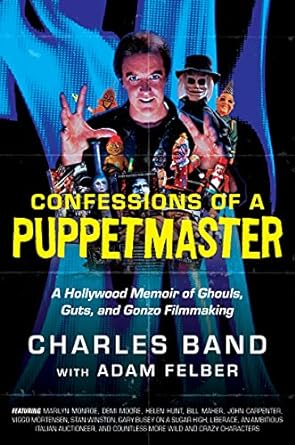
(10) STORIES YES AND NO. Rich Horton reaches back to 1970 to tell Black Gate readers about “No More Stories — The Capstone to Joanna Russ’s Alyx Sequence: ‘The Second Inquisition’”.
“No more stories.” So ends Joanna Russ’s great novelette “The Second Inquisition.” But in many ways the story is about stories — about how we use them to define ourselves, protect ourselves, understand ourselves. It’s also, in a curious way, about Joanna Russ’s stories, particularly those about Alyx, a woman rescued from drowning in classical times by the future Trans-Temporal Authority….
(11) CORE TELEVISION. [Item by Olav Rokne.] Now, I don’t agree with everything in this article (for one thing, Foundation is execrable.) But it is an interesting look at what Apple+ is doing in SFF and why so much of it works. “The Best Sci-Fi Shows of 2023 All of Have One Shocking Thing in Common” at Inverse.
…For All Mankind isn’t the only sci-fi show pushing the limits of the genre on Tim Cook’s dime. The Apple CEO has been quietly funding some of the best science fiction TV in recent memory, ranging from the centuries-spanning Isaac Asimov adaptation Foundation to the mind-bending near-future of Severance to the globe-trotting Godzilla spinoff series Monarch: Legacy of Monsters — to name just a few.
And while it’s hard to say what exactly defines an Apple sci-fi show, Inverse spoke to several showrunners and producers who all agree the tech giant brings a unique, futurist perspective to the genre that — when combined with endless cash — helps explain why, all of a sudden, it seems like the best science fiction television is all coming from the same company that sold you your iPhone….
… One thing you can say about pretty much any show or movie on Apple TV+ is that it probably looks gorgeous. While many Netflix productions have a certain flatness to them that can make it feel like the streamer has been cutting corners, Apple is pouring a lot of money into the look (and star power) of its original series — it helps to have a trillion-dollar cash pile, even if Amazon and Disney are still outspending the MacBook maker….
(12) MARATHON FAN. SYFY Wire understandably wants us all to know “How to Watch SYFY’s Twilight Zone New Year’s Marathon 2023-2024”.
Just as you can count on our planet making a full rotation around the sun every 365 days or so, you can also rest assured that SYFY will use the key of imagination to unlock its annual New Year’s marathon of The Twilight Zone. The honored tradition of airing Rod Serling’s groundbreaking anthology series won’t be going anywhere anytime soon. In fact, the 2023-24 edition is super-sized, with the marathon spanning a total of three whole days — starting Saturday (December 30) and ending Tuesday (January 2).
Who needs to smooch someone at midnight when you’ve got Jason Foster (Robert Keith) teaching his wicked family members a lesson they’ll never forget in “The Masks”? Fittingly enough, the classic episode — which revolves around a collection of vain and greedy individuals ordered to wear hideous masks until the stroke of midnight — will air about 40 minutes before the ball drops. If someone offers you a grotesque party favor along with that glass of Champagne, you might want to turn it down….
(13) CHINA’S MIXED SIGNALS ON VIDEO GAME PLAYING. “Will China Ease Its New Video Game Controls? Investors Think So.” The New York Times says, “After a market rout, gaming companies like Tencent and Netease rally on signals that regulators might apply proposed curbs on users less harshly than feared.”
…The events of the past several days underline the push-and-pull forces in Chinese policymaking. The country’s top leaders have acknowledged they need to stabilize the economy, which has been slow to recover from being virtually locked down during the Covid pandemic. But the government’s tight control of how companies do business continues to inject uncertainty into the markets.
China’s National Press and Publication Administration, which issues licenses to game publishers and oversees the industry, unveiled a proposal on Friday aimed at effectively reducing how much people spend playing games. The plan took the industry by surprise, and investors dumped tens of billions of dollars in company stock.
The regulator issued a statement on Saturday stressing that the draft rules aim to “promote the prosperity and healthy development of the industry,” and said it is “listening to more opinions comprehensively and improving regulations and provisions.”
Then on Monday, the agency announced that it had licensed about 100 new games, after licensing 40 others on Friday. And a semiofficial association affiliated with the agency said that the additional game approvals were “positive signals” that the agency supports the industry.
The new regulations would cap how much money users could spend within games on things like upgrading the features of characters or procuring virtual weapons or other things used by the characters. It would also ban rewards that companies use to entice players to return. The proposal did not specify a spending cap…..
… The industry is still reeling from earlier restrictions first imposed in 2019 aimed at what the government deemed was an online gaming addiction among minors, as well as a broader crackdown against tech companies. Regulators also stymied publishers by not issuing any new game licenses for an eight-month stretch that ended in April 2022….
(14) CHART YOUR COURSE. Archie’s Press offers interesting “Outer Space” prints.
Outer Space is so huge, there’s really no way to wrap your head around the entire thing. This makes it all make sense.

(15) VIDEO OF THE DAY. [Item by Dann.] A tale of old Japan. A tale as old as time. A beleaguered hero looking to avenge past wrongs. Western forces looking to control a local government. A beauty of a beast.
When the culture and government deny any usual path to survival, much less happiness, our hero seeks unusual opportunities instead. Learning the secrets of steel. Surreptitiously learning the secrets of the sword. All of them.
Eventually, our hero sets out on a path of vengeance leaving rivers of blood along the way. Companions are found, whether or not our hero desires their companionship.
Each character is well-developed with unique strengths, flaws, and motivations. Even the villains have a compelling story to tell.
Blue Eye Samurai is not to be missed. And The Critical Drinker knows why. Go watch the “The Drinker Recommends… Blue Eye Samurai”.
[Thanks to Andrew Porter, John King Tarpinian, Chris Barkley, Dann, Olav Rokne, Michael J. Walsh, James Bacon, Cat Eldridge, SF Concatenation’s Jonathan Cowie, Steven French, and Mike Kennedy for some of these stories. Title credit belongs to File 770 contributing editor of the day Cat Eldridge.]



